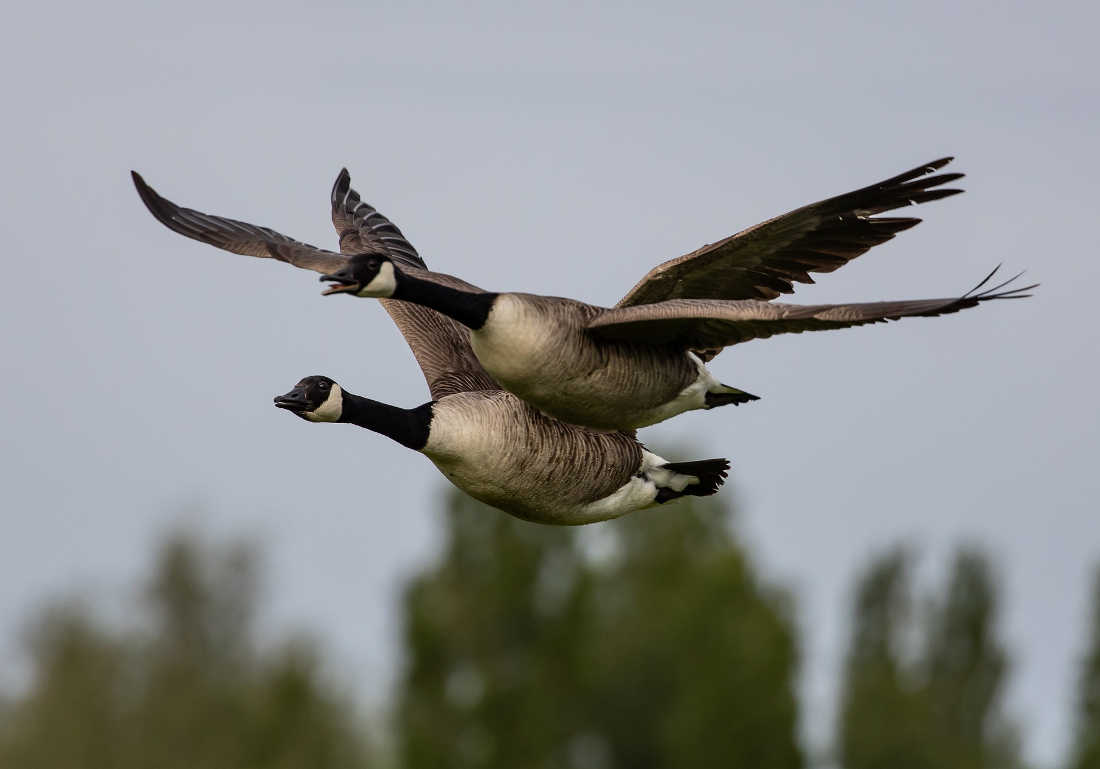By: Randy Tucker
Little things remind us of the way it used to be.
I was stuck in Denver traffic recently. I rolled down my windows as traffic on I-25 ground to a halt. Faintly above the hum of stalled vehicles, I heard a familiar sound: a flight of Canada geese cruised high above the vehicular entanglement on a flight plan only they knew.
I’ve encountered geese from one end of the American continent to the other, and it always gives me pause to reflect.
There has been a change in the flight patterns of geese over the past three decades. I remember coming in from doing evening chores as a high school kid in the early 70s and seeing literally thousands of geese filling the sky. Dozens, sometimes even hundreds, of giant flying “V” formations from horizon to horizon every October, all of them heading south.
The same pattern came the following spring. The numbers were smaller, but the day-to-day pattern was much more regular.
There is a nesting pair of greater Canadians that fly past our house each morning. I hear them long before I can see them. They are easy to track as they speed by at more than 60 miles an hour just a few feet above the ground. One morning last week they buzzed by as I threw hay to my cows and horses. They looked for all the world like a pair of World War II fighter aircraft as they cleared my shop and circled north for open water.
Native Americans hold geese in high esteem. Many tribes measured the seasons by the arrival and departure of flocks of geese. The tribes of Alaska and Northwest Canada had many names for the goose, nearly as many as they had to describe snow.
A couple of the more interesting names come from the Aleut and Yupik tribes of Northern Alaska. Qagmangix is the name the Aleut know the Emperor Goose by, while ‘Lagig in Yupik describes the goose most familiar to us, the black masked Canadian.
Geese are one of the animals durable enough to traverse continents. It’s probably been going on since the dawn of time, but recently, we’ve been able to prove just what incredible range these animals have.
A goose caught in a storm can stay aloft for more than three days. Flocks of geese have been seen by pilots flying nearly 30,000 feet above sea level.
Wildlife biologists study geese in Asia, North America, and Europe. It is not uncommon for hunters or biologists in Finland to find geese wearing bands from American wildlife agencies. The reverse is also true; hunters in Texas have taken birds that were banded by Finnish and Russian biologists.
No other animal could survive the rigors of enduring a cross-continental storm as they are blown across the Atlantic or Pacific.
Perhaps my most striking memory of geese came on a foggy morning on the Massachusetts coast. A stretch of sandy beach extended in a line straight into the cold waters of the North Atlantic.
The morning sun was already up, producing that kind of ethereal glow that gives a surreal appearance to common things. In the advancing sunlight, I made out shadowy shapes just ahead of me on the beach. As I approached, the shapes turned towards me. They were geese, giant ones, I thought, at first. The fog took away my depth perception and theirs as well. I almost stepped on one before I realized how close they really were.
Like the monarchs that they are, they didn’t break and fly away in fear. They just gave me what I would interpret as a “goosely” sneer and waddled away. I was no threat to their world. They disappeared in the fog and were long gone when it lifted 45 minutes later.
Geese are magical creatures. They can fly thousands of miles and return to the exact place they were born. Scientists conjecture about magnetic resonance, DNA memory, celestial mapping, and a host of other solutions to this mystery, but the bottom line is that no one knows what allows them to navigate with such incredible accuracy.
As with many of the miracles of this earth, it just is. It’s something we can enjoy without fully understanding why.
Randy Tucker is a retired history teacher and freelance writer from western Wyoming. He has a lifetime of experience in farming, ranching, hunting and fishing in the shadow of the Wind River Mountains. Contact him at [email protected].

